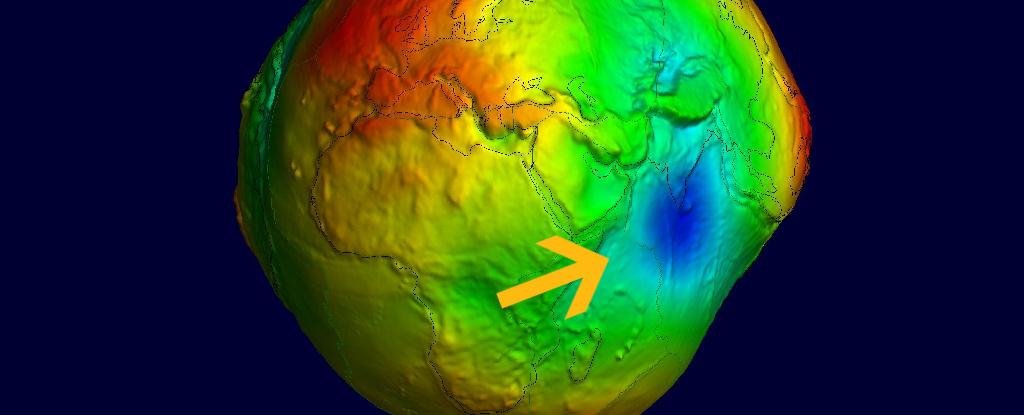Call low Indian Ocean geoid (IOGL), The gravitational anomaly responsible for lower sea level rise in an area of three million square kilometers has been investigated for years by scientists looking for the source of the anomaly. Recently, two researchers from the Indian Institute of Science (IISc) in Bangalore, India, proposed an explanation for the mystery.
IOGL is a specific ocean region located approximately 1,200 kilometers southwest of the southern tip of India. in this place, the sea surface is relatively lower than a reference surface known as a geoid. The article, published in Geophysical Research Letters, explains that this depression is “the result of a mass deficit within the Earth’s mantle and under the Indian Ocean.”
The geoid is a mathematical model that represents the shape that the oceans would ideally take if unaffected by external influences such as currents, winds, and temperature changes. In the Indian Ocean example, the low geoid is a geodetic feature (linked to the study of the Earth’s shape, size, and gravitational field), suggesting a lower gravitational pull compared to the global average.
How was the low Indian Ocean geoid formed?
Using models of global convection (heat transfer caused by the rise of hot materials to the surface) in the Earth’s mantle, two IISc researchers analyzed the movement of tectonic plates sliding “over Earth’s hot, sticky mantle” over the past 140 million years. years”. At that time, the Indian tectonic plate was separating from the supercontinent Gondwana.
As the giant plate shifted northward, a bed of an ancient ocean called the Tethys Sea sank into Earth’s mantle, opening up behind the Indian Ocean. After more than a dozen simulations of this model, the researchers noticed a common thread: magma plumes, vertical columns of partially molten rock material floating beneath the IOGL.
According to the research, the first of these plumes appeared about 20 million years ago and 10 million years after the “leak” of the Tethys Sea. The lower geoid increased as plumes spread out from under the lithosphere and moved towards the Indian subcontinent.. It was these plumes, along with the structure of the Earth’s mantle in the region, that were responsible for the formation of this negative anomaly, the researchers said.
Source: Tec Mundo
I’m Blaine Morgan, an experienced journalist and writer with over 8 years of experience in the tech industry. My expertise lies in writing about technology news and trends, covering everything from cutting-edge gadgets to emerging software developments. I’ve written for several leading publications including Gadget Onus where I am an author.











